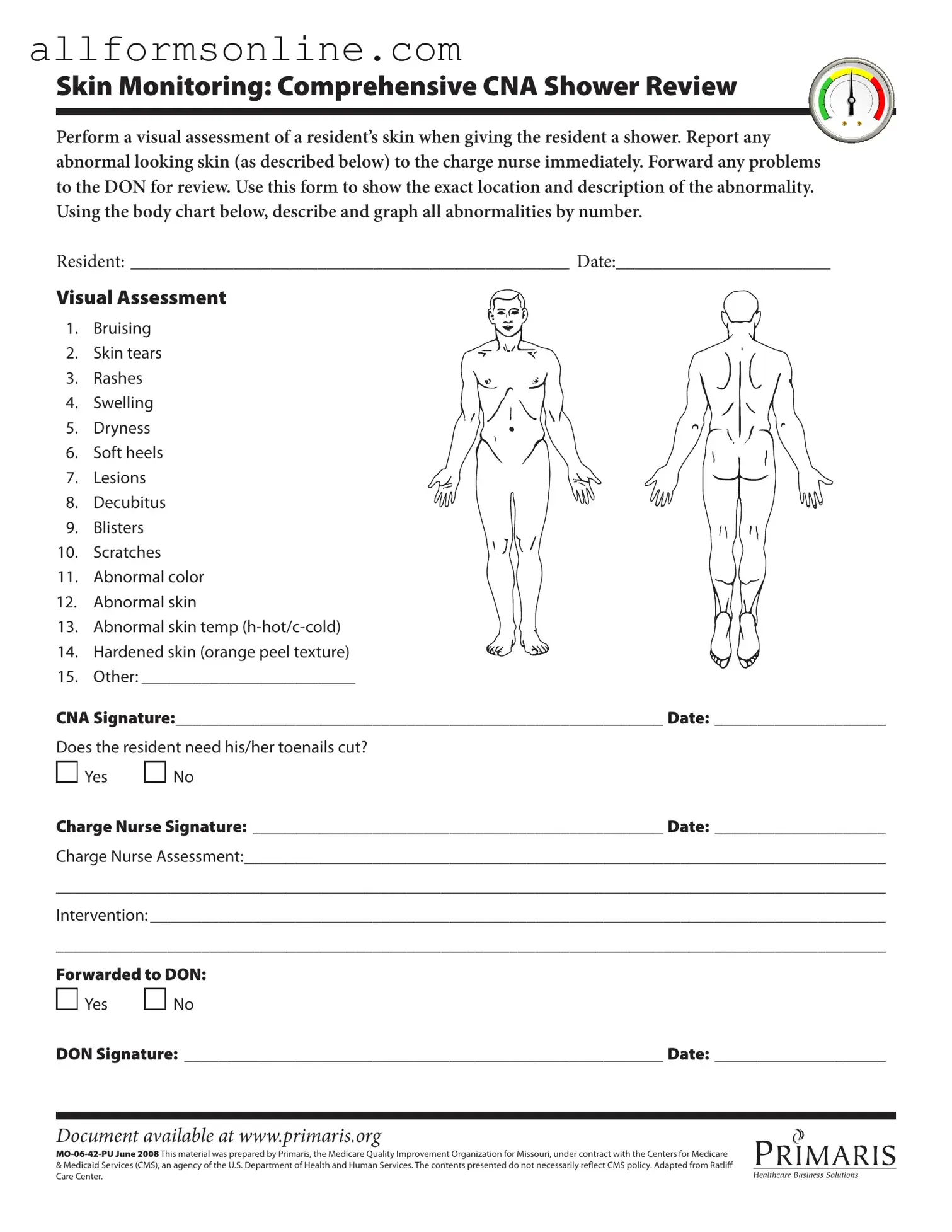What is the purpose of the CNA Shower Sheets form?
The CNA Shower Sheets form is designed to facilitate a thorough visual assessment of a resident's skin during their shower. This assessment helps identify any abnormalities, such as bruises, rashes, or skin tears. By documenting these findings, the form ensures that any issues are promptly reported to the charge nurse and subsequently reviewed by the Director of Nursing (DON).
What should a CNA do if they notice an abnormality on a resident's skin?
If a CNA observes any abnormal skin conditions while showering a resident, they must report these findings to the charge nurse immediately. It is crucial to provide a detailed description of the abnormality and its exact location using the body chart included in the form. This prompt reporting is essential for ensuring the resident receives appropriate care.
What types of skin abnormalities should be monitored?
The form outlines several specific skin conditions that should be monitored, including bruising, skin tears, rashes, swelling, dryness, and more. Each of these conditions can indicate varying levels of concern and may require different interventions. The form provides a comprehensive list to guide CNAs in their assessments.
How is the information documented on the CNA Shower Sheets form?
Documentation on the CNA Shower Sheets form involves filling out the resident's name, the date, and the specific abnormalities observed. CNAs use the body chart to graphically indicate the locations of these abnormalities. After completing the assessment, the CNA must sign the form, and it may also require signatures from the charge nurse and the DON, depending on the findings.
Is there a section for toenail care on the form?
Yes, the form includes a section that addresses whether the resident needs their toenails cut. This is an important aspect of personal care and can impact the resident's overall health and comfort. The CNA can simply mark "Yes" or "No" in response to this question.
What happens after the CNA completes the form?
Once the CNA completes the form, it should be submitted to the charge nurse for review. The charge nurse will then assess the documented abnormalities and determine any necessary interventions. If needed, the information will be forwarded to the DON for further evaluation and action.
Where can I access the CNA Shower Sheets form?
The CNA Shower Sheets form is available online at www.primaris.org. This resource ensures that CNAs can easily access the form when needed, facilitating consistent and thorough skin assessments for residents.
